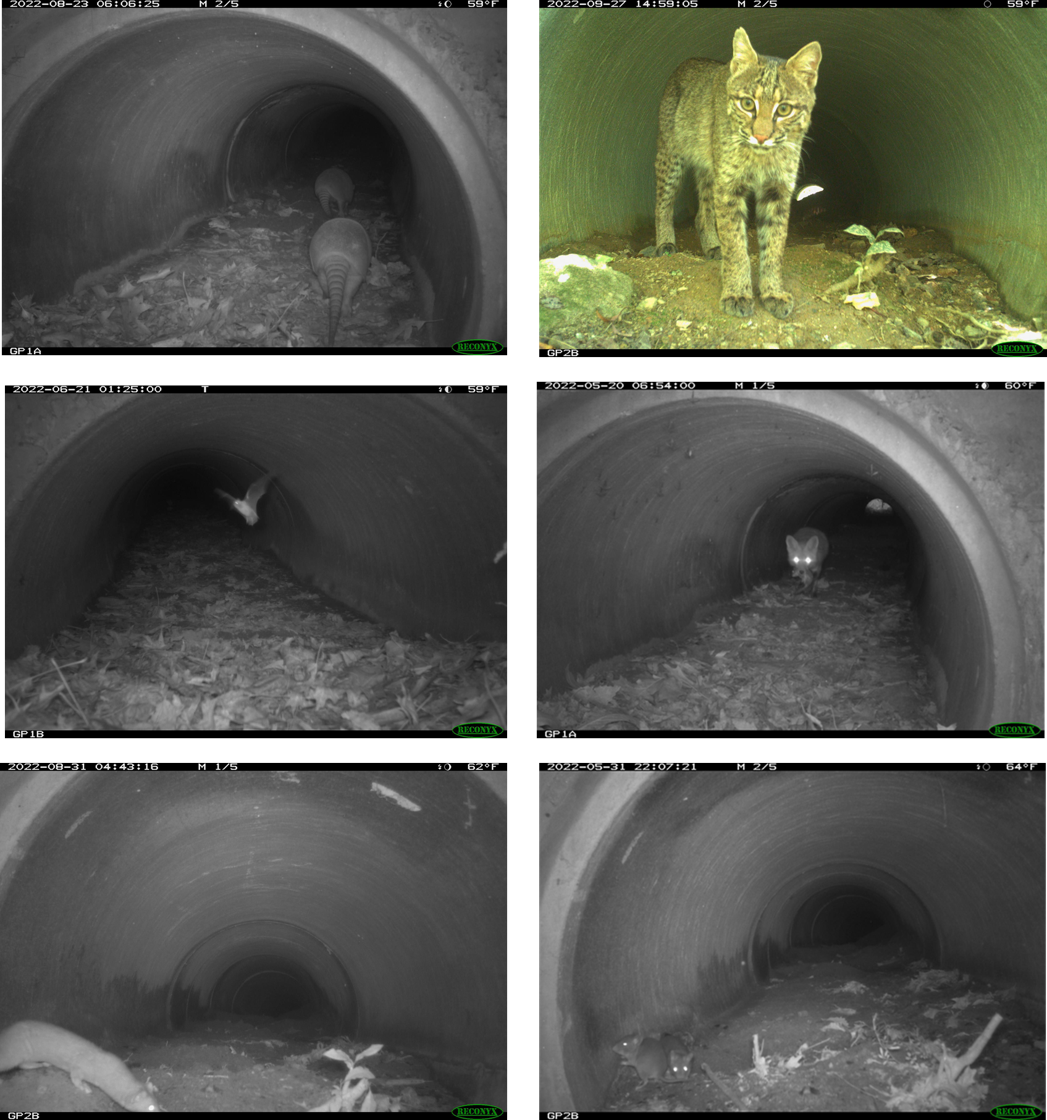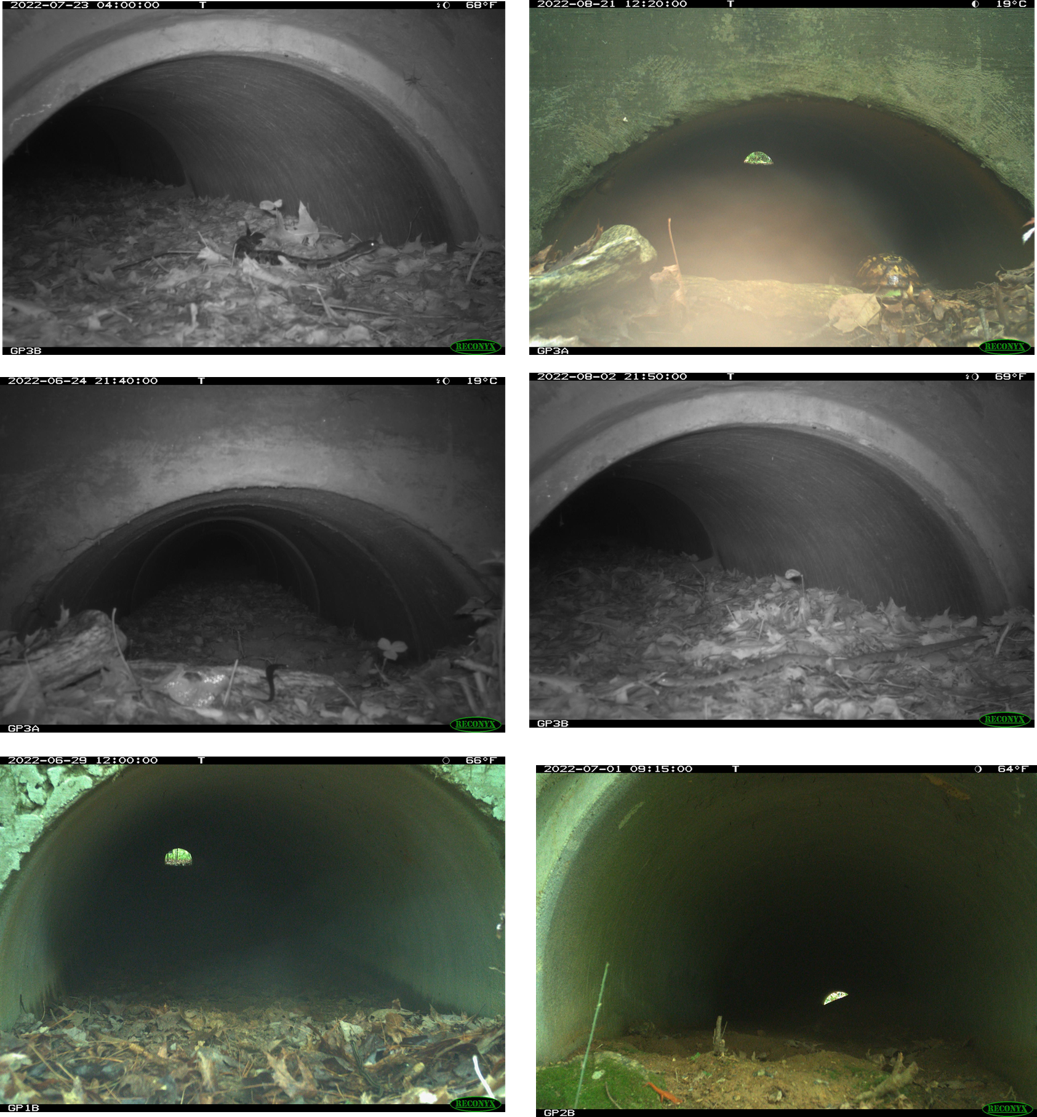Monitoring of Road Crossing Structures in Southern Appalachia Reveals Use by Timber Rattlesnakes
Creating wildlife-specific infrastructure over or under roads is a proven solution to increase wildlife habitat connectivity and prevent wildlife vehicle mortality, but these crossings are often focused on large-bodied mammals due to driver safety concerns. However, roads can pose an even greater conservation threat to smaller and less mobile species of conservation concern, such as reptiles and amphibians.
In 2009 three small culverts were arbitrarily placed under a newly constructed two-lane park road in Gorges State Park in the Blue Ridge Mountains of North Carolina with the hopes of facilitating safe passage under the roadway for timber rattlesnakes (Crotalus horridus) and eastern box turtles (Terrapene carolina carolina), both species of conservation concern in North Carolina and both negatively impacted by roads and subsequent habitat fragmentation.
From June to October 2022, 13 years post implementation, Wildlands Network and the Timber Rattlesnake Conservation Alliance monitored the openings of each culvert with wildlife cameras set to take five minute time-lapse and motion detection photos to determine structure use by wildlife.
We recorded 5,919 wildlife detections at structures that included a diversity of species and relatively high numbers of herpetofauna and mammals. We recorded a diversity of wildlife crossing safely under the road via the crossings structures (i.e., paired camera detections on an animal entering and exiting a structure) and using the structures (i.e., enter or exist with no paired enter or exit) including successful crossing of the culverts by at least one timber rattlesnake and multiple mammals including armadillos, long-tailed weasels, wood rats, gray foxes, and bobcats. Multiple herpetofauna such as box turtle, copperhead snake, eastern newt, and multiple salamander species were recorded using structures.
The use and confirmed crossings by a multitude of species shows the efficacy of these structures to safely cross wildlife under the roadway, reducing wildlife vehicle mortality and increasing habitat connectivity for a diversity of wildlife. The incorporation of these structures under roads could be an important tool in biodiversity conservation.
A variety of mammals and timber rattlesnakes used the crossing structures during the study period. Photos: Wildlands Network
Our next steps for this project are to:
Conduct year two of monitoring from June to October 2023.
Incorporate directional reptile and amphibian fencing to help guide and improve wildlife use of crossings structures.
Post-monitoring after fencing construction* to determine fencing impact.
Advocate for crossing structures to be incorporated into the State Park’s infrastructure.
*Wildlands Network is currently working with Gorges State Park to secure funding for the installation of fencing to direct wildlife to the crossing infrastructure.



